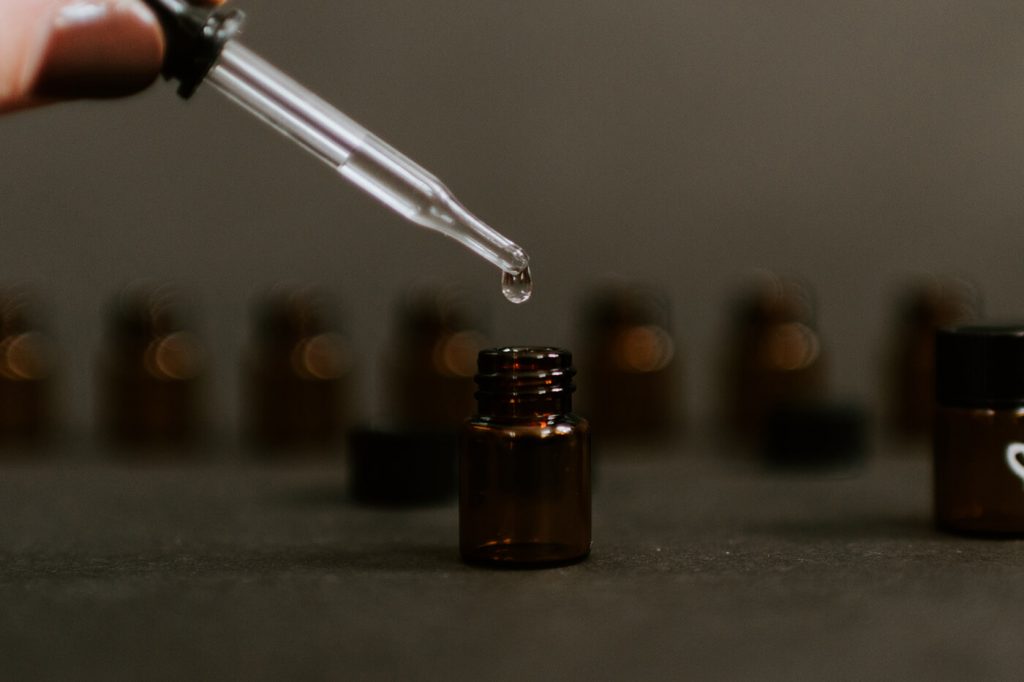The science behind the CBDA cannabinoid
It’s crazy to think that just a couple of short decades ago, no-one had heard of CBD, and now it’s almost everywhere you go, from the local farmer’s market to the gas station. However, CBD is just one of over 100 cannabinoids that can be isolated from the hemp plant and, now that hemp is legal once again, research into the health benefits of various major and minor cannabinoids is mounting up.
CBDA hit the headlines last week, when its potential to treat and prevent the coronavirus infection was revealed in a preclinical study, causing millions of people to suddenly ask questions like “what is CBDA?” and “what is CBDA used for?”.
In this article, we’re going to take a closer look at the available research on CBDA to see what we know about its effects and benefits so far.
What is CBDA?
Cannabinoids are biologically active compounds that interact with our body’s endocannabinoid systems and modern research has recently identified these compounds in a variety of plants in nature (besides cannabis), including echinacea, ginseng, black pepper, and broccoli.
However, CBDA is one of over 100 cannabinoids that can be extracted from the cannabis or hemp plant. CBDA starts life in the resinous glands of the hemp or cannabis flower as cannabigerolic acid (CBGA), which is known as the grandmother of all cannabinoids. Depending on which plant enzymes are activated to influence the synthesis, CBGA transforms into one of three cannabinoids, tetra-hyrdocannabinolic acid (THCA), cannabichromenic acid (CBCA), or cannabidiolic acid (CBDA).
Does CBDA turn into CBD?
These raw compounds are the acidic precursors to the cannabinoids THC, CBC, and CBD, respectively. CBDA converts into CBD when it is exposed to sunlight or heat, through a transformational process called decarboxylation, in which it loses it’s acidic, or carboxyl, group of atoms.
What does CBDA do?
Compared to CBD, research into the therapeutic potential of CBDA is still in its infancy and there isn’t any human research available at this point. As you can imagine, most of the studies have been carried out in preclinical lab settings and on animals, so more research is needed before we’re able to say what benefits CBDA might have in the human body.
Below we’re outlined the five areas that we believe to be the most promising benefits of CBDA.
CBDA effects – is CBDA psychoactive?
Like CBD, CBDA is unable to bind to the cannabinoid type 1 (CB1) receptors in our brains, meaning a CBDA tincture, no matter how strong, shouldn’t be able to make you feel intoxicated. Any direct effects you might feel from taking CBDA will be much more subtle. Some people have reported feeling more relaxed and have also experienced an improvement in their overall mood.

Top 5 Potential CBDA benefits
Like other cannabinoids, CBDA is able to interact with our endocannabinoid system, but it doesn’t bind to our cannabinoid receptors like some other cannabinoids do. Instead, CBDA exerts its influence indirectly by inhibiting cyclooxygenase-2 (COX-2) enzymes and serotonin reuptake.
1. CBDA to reduce inflammation and inflammatory pain
One of the areas that has the most research so far is using CBDA for pain, especially inflammatory pain.
COX-2 enzymes are associated with inflammation at the site of an injury or infection and in a 2008 study, CBDA was shown to inhibit these enzymes in a similar fashion to aspirin or other non-steroidal anti-inflammatory drugs (NSAIDs). CBDA was shown to reduce inflammation, as well as any pain associated with the inflammation.
Interestingly, CBDA looks chemically similar to salicylic acid (aspirin) and other NSAIDs as it carries the same carboxyl group of atoms that ultimately define it as acidic (as we discussed previously, when CBDA is decarboxylated it loses this carboxyl group and becomes CBD).
Three years later another study contradicted this research as it showed that it wasn’t the COX-2 enzyme that CBDA inhibited, but that it was possibly the COX-1 enzyme, prompting a need for further research into CBDA’s mechanisms of action.
A 2018 research paper also showed that both CBDA and THC potently reduced pain behavior and inflammation in rodent models of inflammatory pain. Their findings suggested that the effects were mediated by activation of the TRPV1 receptor, as the anti-hyperalgesia effects were blocked when tested alongside another compound that blocked this particular receptor.
The team also noted that when ineffective doses of CBDA and THC were combined, there was an enhanced anti-hyperalgesia and anti-inflammatory effect. These “amplification” effects found in CBDA could potentially be very useful in treating people with low-dose THC in the future, so that people can enjoy the same results as high-dose THC but without any unwanted intoxication.
2. CBDA to alleviate vomiting and nausea
CBDA has also been shown to possess antiemetic properties, preventing vomiting and suppressing nausea in rats. It also enhanced the effects of other anti-nausea treatments that targeted the 5-HT3 receptor, such as ondansetron (OND), which is an antagonist of 5-HT3 receptors
One piece of research also showed that by enhancing serotonin receptor 5-HT1A activation, CBDA displayed significantly greater potency than CBD at inhibiting vomiting. The team of researchers believe that CBDA holds great promise as a treatment for nausea and vomiting, including anticipatory nausea for which there is no current treatment available.
3. CBDA to reduce symptoms of anxiety and depression?
The neuroprotective, anxiolytic, and antidepressant properties of CBD are thought to be mediated by the 5-HT1A receptor. Since CBDA has been shown to exhibit 100-fold greater affinity for this receptor, this has prompted some companies (that are selling CBDA products), to claim that CBDA may also possess similar but more potent effects in these areas too.
However, while the theory sounds promising there is absolutely no research that I was able to find on CBDA and anxiety and/or depression to support these claims. But watch this space.
4. CBDA as an anti-convulsant
The anti-convulsant effects of CBDA were recorded in a 2019 research paper. According to the team, CBDA was highly brain penetrant and exhibited significant anticonvulsant properties in a mouse model of Dravet syndrome.
The paper points out that this provides further proof that there are many compounds within the cannabis sativa plant that are anticonvulsant, not just CBD. In agreement, I also think that this provides even further evidence for the existence of the entourage effect and that we should all be taking full-spectrum (or at least broad-spectrum) products.
5. CBDA to treat and prevent the coronavirus
Just last week, a research paper was published that showed two hemp compounds, CBDA and CBGA, were able to prevent the SARS-CoV-2 virus from infecting human cells.
This research is purely lab-based (it was conducted in a petri dish) at this point, so while it’s very exciting, like all of the other research into CBDA, more research is needed before we can say anything for sure.
CBDA was shown to bind to the spike protein that sits on the surface of the virus. In order to infect us, the SARS-CoV-2 virus must first latch onto one of our ACE2 cells (found abundantly throughout our lungs, heart, kidney, and intestines) and once latched on the spike protein (also the target for vaccinations and antibody therapy) then acts like a key sliding into a lock.
Once the “key” is in, the virus is then able to enter (infect) the cell and multiply. If CBDA and CBGA have previously bound to this spike protein, then the “key” no longer fits the “lock”, so the virus is effectively disarmed as it’s unable to enter the cell.
The team of researchers have said that these compounds may prove to be helpful in treating the virus (to prevent it spreading and getting worse), as well as in preventing infection in the first place.
Unfortunately, nothing is known about the doses that might be needed (or anything like that), because the research is nowhere near that stage in development. And it’s important to remember that what happens in a petri dish doesn’t always replicate in the human body.
 Never pay full price on CBD again!
Never pay full price on CBD again!Join the newsletter to get notified about the best deals on CBD so you never have to pay full price again.
By submitting this form you confirm that you have read and are agreeing to our privacy policy.
What CBDA products are available?
CBDA is naturally abundant in high-CBD hemp flower. You only have to look at the lab reports of a particular strain to see how much CBDA is contained within.
There are also a few companies that make raw CBDA extracts of hemp flower, so it’s possible to buy CBDA capsules, oil, tincture.
If you’re looking for ways to add more CBDA to your diet, then keep your eye out for our upcoming article “How to Consume Raw Hemp (for CBDA and CBGA)”, in which we’ll discuss the easiest and best ways you can increase your cannabinoid (acidic form) intake.
CBDA vs CBD
So, how does CBDA stack up against CBD? Let’s take a look at some of the most common questions we receive.
Is CBDA stronger than CBD?
It’s not accurate to say that, across the board, CBDA is stronger than CBD as they are two different compounds and CBDA’s uses are only starting to come to light. CBDA has been shown to have a greater affinity for the 5-HT1A receptor (approximately 100x), which may mean that it is able to exert effects (on this receptor) at 100x lower doses, but this has only been tested in the field of nausea.
Activation of this receptor has been involved in the mechanism of action for anxiolytic, antidepressant, and antipsychotic medications, but that doesn’t mean that CBDA will have these effects and there is no research or evidence on the subject.
There is also no research on using CBDA for sleep, or stress, or any of the other symptoms that CBD is said to help (at this time), so to say that CBDA is a stronger version of CBD is misleading to say the least.
Is CBDA better for pain than CBD?
When you look at CBDA vs CBD for pain, there is one study (discussed previously) that suggests CBDA might be better for inflammatory pain, but it was a study on rodents and it’s far from conclusive. The study found that CBDA was able to reduce inflammation and pain in a rodent and that CBD was not able to produce the same effects, when administered at a similar dose.
However, there is no research on the subject of CBDA and neuropathic pain (read more about CBD and pain here). If you want to try CBDA to see if it can work better for you, then there’s certainly no harm in that. and we’d love to hear about your experiences so that we can share them and potentially help even more people.
Summary
It’s important to remember that most processed CBD products (such as oil, capsules, and gummies) on the market contain CBD and not CBDA. These compounds are related in the fact that one transforms into the other when heated, but they are different compounds and may one day prove to have different therapeutic potential.
As the acidic precursor to CBD, CBDA is found most abundantly in hemp flower. Following the research on how CBDA and CBGA can potentially prevent infection from Covid, we’re sure many companies will now start selling extracts to meet the new larger demand for these acidic cannabinoids.
Just remember to make sure that you see compliance and safety reports, to ensure that the product you choose is 100% clean and safe to consume.
Failing that, just stick with hemp flower. You can make recipes with the raw hemp flower (superfood smoothies) or make your own extracts at home using shake and smalls, as long as you don’t use heat, you’re golden.
